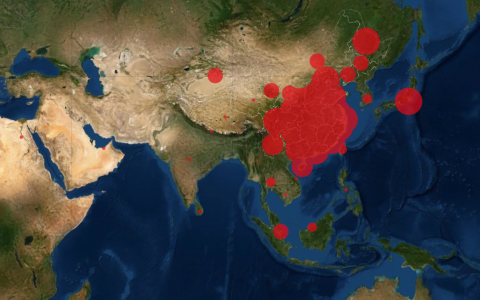
(Forbes)The market and the economy have recently traveled two different paths. As over 26 million have filed for unemployment in the past five weeks, stocks have rebounded by 28% since reaching market bottoms in late March.
Yet, as some states tiptoe back towards opening up non-essential businesses, it’s a test to determine which metric – stock market or economic numbers – is reading the tealeaves correctly.
That’s because, even as states prepare for or move forward with opening up businesses again, warnings persist about the potential of a second wave of COVID-19. The Center for Disease Control and Prevention director Robert Redfield has said that if a second wave hits during flu season in the fall, it could end up causing more trouble than this cycle. Meanwhile, Dr. Anthony Fauci has called the potential for a second wave “highly likely.”
When you look at the market, though, it doesn’t seem as if investors fear another mass shutdown. That lack of fear highlighted in the market is what could lead to dramatic volatility, in case the second wave turns out worse than expected.
For your portfolio, it’s one of the biggest short-term risk factors you face. The spread you see in your portfolio’s response will depend on the size of the second wave. “It could get ugly,” said Charlie Ripley, a senior investment strategist at Allianz Investment Management, if a second run of the virus leads to a renewal of shelter in place measures and shuts down businesses across the country.
A Low Flow of New Cases
At this point, most market prognostications haven’t incorporated the impact of a vaccine for the novel coronavirus over the next year. They’ve also tempered expectations that immunity among those with antibodies can drive an economic recovery.
Instead, estimates for a second wave includes the fact we’ve now experienced the virus before and have contained its spread.
“Our ability to contain the infection rate should still depend heavily – even primarily - on social measures,” says Paul Christopher, head of global market strategy at Wells Fargo’s Investment Institute. “If our social measures and new protocols for social interaction are successful, as we believe they can be, then a secondary peak in infections should be below the current peaks registered in the various regions of the world.”
It’s an implication that if we’re to face a second wave, then it won’t last as long, impact as many cities, result in as many deaths and allow businesses to operate in some fashion. Wells Fargo’s low end – base case scenario – for the S&P 500 for March 2021 is 2,670, or a 7% decline from today’s mark.
While it would make for a bad year, a 7% one-year decline from today, based on the level of impact the coronavirus has caused, would not require you to reconsider any long-term plans.
That doesn’t mean the ride will be smooth, of course. But as businesses re-launch and people steadily make their way outside again, the market won’t experience rash slowdowns to cause a significant valley, if the second wave proves weaker than the first.
A Surging Second Wave
The biggest issue – and fear – would occur if a larger second wave occurs, forcing the U.S. to retreat similarly to how it has reacted to the initial crisis. If businesses must close across the country again while supply chains shut, then there’s less support that government can provide, since it has already given trillions in aide.
“We are seeing record fiscal and monetary stimulus to help combat the impact now, but should things get worse this fall, will more stimulus really help?” says Ryan Detrick, Senior Market Strategist for LPL Financial. “We aren’t so sure.”
LPL Financial has a rosier outlook, all things considered, for the S&P 500, believing it should be valued in 2020 at 3,200. That’s a nearly 12% increase from today’s levels.
A bear case, which could play out if the virus returns in a big way after businesses reopen, has a potential of 2,200 or lower, which would lead us to a 23% fall from current marks. It’s also 34% below the February market highs, before the coronavirus selloff began. That would steep the market into deep bear territory through the year.
What’s troubling, from an investing and health standpoint, isn’t just that we could face a second wave of the virus., but that we could deal with multiple ripples of the virus’s return, until a vaccine is developed. That could take 12 to 18 months, or longer, since it has to go through development and testing, before it reaches the masses.
Even if the secondary coronavirus wave hit markets on a small scale, it doesn’t mean the third or fourth wave won’t have a stronger impact, leaving your portfolio in riskier territory. If you’re uncomfortable with that level of uncertainty, then its time to consider your risk levels before seas get choppy again.



